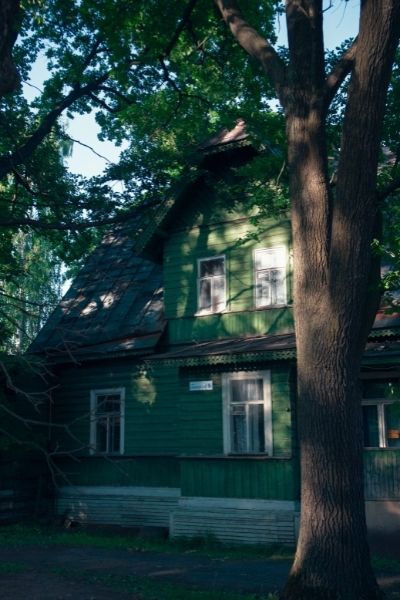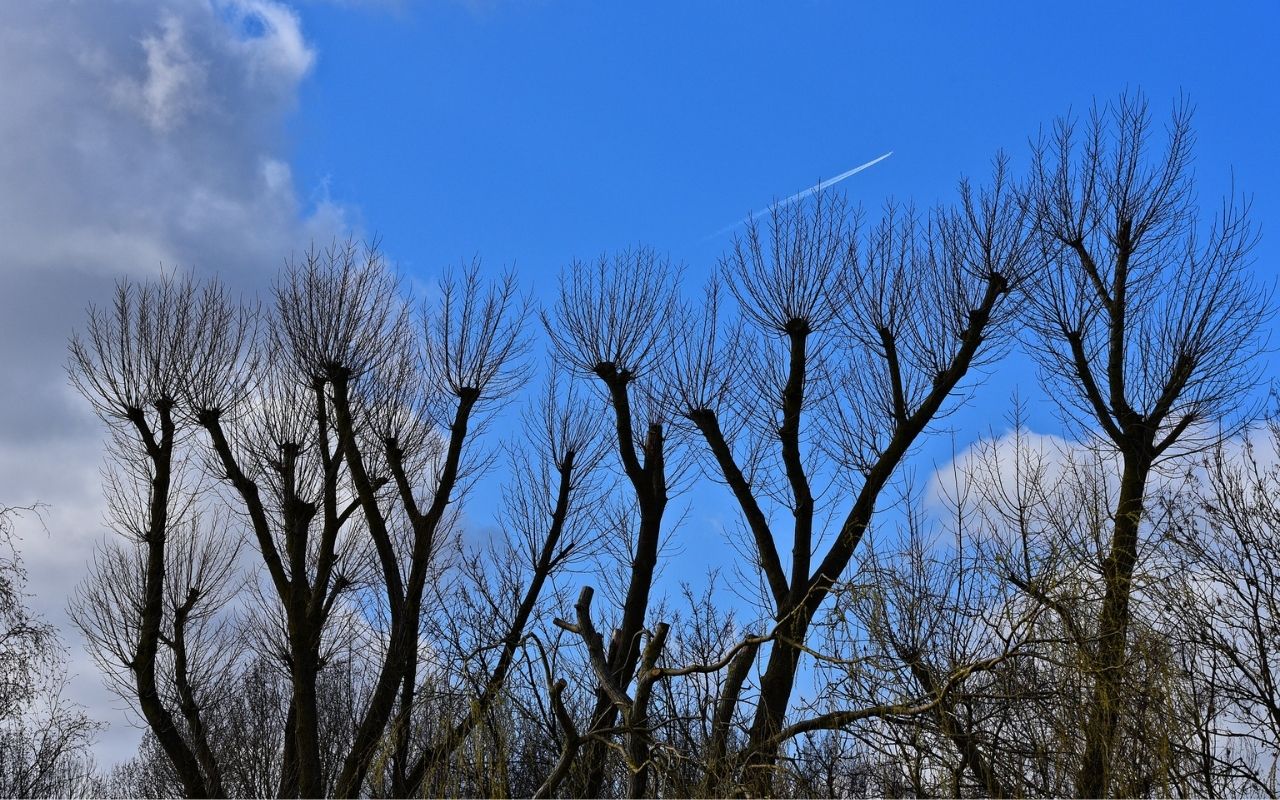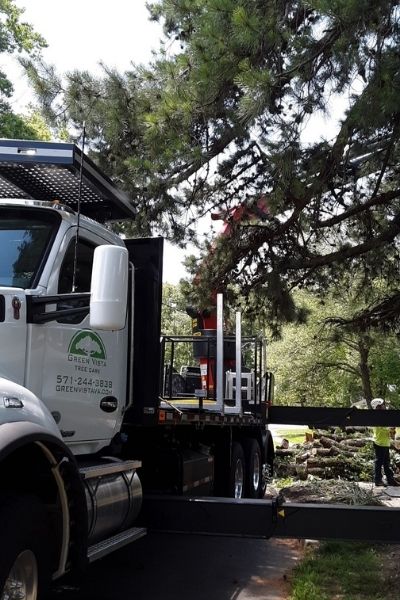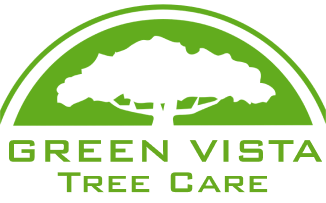As tree canopies fill in after the flush of spring growth, you may notice that your trees are suddenly blocking your view, hitting your house, or getting in the way of foot or vehicle traffic. Aside from cutting down your trees, what can you do to improve your view, protect your home, and prevent accidents? Trim your trees! Tree pruning can give you the look and space you want without harming your trees – but only if it’s done correctly.
Learn what to ask and look for when you hire a tree service company to trim your overgrown trees. Plus, the one answer that you should never accept – and why.
10 Questions to Ask Before Trimming an Overgrown Tree
Before you have your overgrown trees trimmed, ask yourself (and your tree trimmer) these questions. The answers will give you guidance to make informed decisions.
1. Is there something wrong with the way your tree looks currently?
Are your trees overgrown? Beauty is in the eye of the beholder; you might like their look or the privacy they offer. But, generally speaking, overgrown trees need trimming to keep them healthy.
Overgrown tree crowns create conditions for insect pests and diseases to thrive because a dense crown prevents sunlight and air from reaching interior branches and leaves.
Dense tree crowns can be the result of:
- Too many branches, including crossing or duplicate branches
- Suckering branch growth growing vertically
- Deadwood, meaning twigs and branches that died and remain in a tree’s crown
- Vines, such as ivy, that climb into a tree’s crown and shade out the tree’s leaves.
In addition to attracting pests and diseases, if you skip trimming or crown cleaning (pruning out branches to open a tree’s crown), your trees can become unstable and unbalanced. This makes them more likely to blow over in storms or lose large branches from breakage.
Before you employ a tree trimming service, ask them how (or if) they can provide the look you want without injuring or stressing your trees, or removing too much of your tree’s crown at one time.

If tree branches are touching your house, you may want to prune them back.
2. What do you want your trees to look like?
Before you begin to trim your overgrown trees, you should decide how you’d like them to look. Ask yourself if you want (or need) your trees to do any of the following:
- Let more light into your home
- Shade certain areas of your home
- Shade less (or more) of your garden
- Obscure less of your viewshed
- Maintain safe clearances for utility lines
- Ensure visibility for pedestrians, bicyclists, and motorists
What you want will determine the type and amount of pruning your trees will need. A certified arborist can explain how best to prune your trees to meet these requirements.
Note: A certified arborist will also evaluate your trees and tell you if the pruning you want will be successful. Certified arborists are bound by a code of ethics and won’t perform any tree work that could be damaging or excessive.
A low-priced tree trimming service or landscaper may be cheaper but come with no guarantee.
3. Is the pruning or shaping you want realistic for your tree?
You may want your existing trees to have a different shape, be shorter, narrower, or provide you with more (or less) screening. Humans have been pruning trees since at least the 4th century BCE, but most trees won’t survive in the long term if you repeatedly thwart their natural form by excessive pruning.
Repeated structural pruning and crown trimming can sap a tree’s energy reserves. And frequent pruning cuts increase the chances for insect pests and diseases to find a way into your trees.
Repeated pruning to control a tree’s form is also expensive; you’ll need to have it pruned often and rigorously to maintain an imposed shape that it doesn’t want to be in.
So, if you have a wide, spreading tree growing in a location where a narrower, upright tree would be a better fit, you might consider removing and replacing your tree.
4. Is this the right time of year for the pruning you want?
Tree pruning and tree trimming can be done throughout the year, but there are specific trees that should be pruned only at particular times.
These include:
- Spring-flowering trees, which should be pruned just after flowering
- Fruiting trees, which should be pruned while dormant to ensure vigorous fruit production
- Oak trees, which should be pruned only during winter dormancy to prevent oak wilt
- Sap-producing hardwoods such as maples, which you should prune only when the sap isn’t flowing, so pruning wounds are sealed faster
- When birds are nesting in your trees, you should not have pruning done until the fledglings have left their nest and it’s empty. Songbird populations are in dangerous decline, and we should all work to ensure their survival. With the exceptions of hazardous trees or emergency tree removal, schedule your tree pruning when birds are not nesting.
5. Will it require special equipment or training to properly trim your tree?
Northern Virginia is home to dense urban neighborhoods and sprawling suburbs, and you’ll find trees in all types of our developed areas.
Pruning or removing trees in hard-to-reach locations requires planning and specific equipment. Before you hire someone to prune your overgrown trees, be sure to ask how they will reach your trees and how they will remove branches and debris.
You should also make sure that your tree pruners have experience and training to properly prune your tree species and the type of tree work you want (crown reduction, crown cleaning). You can fix a bad haircut, but bad tree pruning can affect your tree’s long-term health!
6. If a climber will be in the tree, will they wear climbing spikes? If yes, run away!
A tree care professional will never use climbing spikes while working in a living tree. The damage to your tree’s bark from sharp spikes creates ideal openings for insects and diseases, and certified arborists and trained tree pruners won’t use them.
If your tree trimmer assures you that climbing spikes aren’t a cause for concern, don’t hire them. This is a clue that they don’t know how to treat trees right, or don’t know professional standards for tree work.

Do not remove too much of your tree’s canopy, or it can permanently damage your tree. The image above is an example of “tree topping,” which should be avoided.
7. Will your tree be topped or hat racked? If yes, keep running!
Never top or hat rack your trees. These terms refer to cutting branches back to stubs without concern for a tree’s structure and usually include cutting off a tree’s terminal leader or main trunk to reduce its height.
This practice is devastating to trees, and often fatal. Tree topping destroys your tree’s form and no arborist or trained tree worker will suggest doing it.
Homeowners who want the size of their trees reduced and hire cheap tree trimmers often end up with topped trees. The sad reality is that topped trees will produce even more growth in response, and a homeowner will then have to pay more for corrective pruning.
Before you hire someone to trim your trees or reduce their size, ask them to put in writing how they will do the work. If you see the words “topping” or “heading,” hire someone else. An arborist will use terms such as “crown reduction” and explain how they will do the work without damaging the tree.
8. How much of your tree’s canopy will be removed?
Trees have long lifespans, and their crown size and spread develop over years and decades. If your trees have become overgrown, chances are that you’ll need to reduce their size or density in steps instead of all at once.
A general rule of thumb is that you should remove no more than 15-25% of a tree’s crown at one time, depending on the tree’s species, age, and health.
A very overgrown or neglected tree may need structural pruning to remove major branches, and crown reduction to reduce overgrown lateral branches. You should have this work done in steps, over time, to reduce stress and minimize damage.
When you remove branches from a tree, you’re reducing the volume of leaves that your tree relies on to produce food energy. Trees regulate their growth according to the energy stores they have, so a gradual reduction of branches and leaves is the best way to ensure your tree’s overall health.
Pruning off a tree’s branches also stimulates its growth response, which uses up energy reserves.
To avoid depleting a tree’s energy stores, prune during dormancy or after spring’s growth has finished.
It took your trees some time to become overgrown, so take a philosophical approach and do your corrective pruning over time as well.

9. Do you have a plan for your tree pruning?
We’ve all heard the adage to “measure twice and cut once.” When you are planning to prune your trees, you should take a similar approach and make a plan before you start sawing branches.
If you aren’t familiar with how a tree grows or know why you want to remove or keep a particular branch, put down your tools and take a step back.
A tree’s branching structure is vital to its vigor and balance, and each pruning cut should consider the whole tree’s health. Tree service professionals and arborists are trained to evaluate a tree’s form and branching structure and will prune off only as much as is absolutely necessary.
Remember that when it comes to tree pruning, the volume of branches and foliage that’s cut off does not mean you got your money’s worth. A single branch cut that opens a tree’s crown or balances its shape is worth more than any excessive or random pruning.
10. Is the company you hire fully insured?
When you hire someone to trim your overgrown trees, you’re putting your valuable property in their hands. You can have accidental damage to your home repaired (though it’s best to avoid accidents in the first place!), but you can’t replace a mature tree that’s damaged or killed by poor pruning or mechanical damage.
If you hire a low-cost or unlicensed tree trimmer, you may be left responsible to pay for repairs to your property or corrective pruning to your trees.
Before you have tree work done, be sure to ask if your tree trimming service is fully insured. You should expect to receive proof of insurance as well as information about professional licenses and certifications.
A Final Word About Trimming Overgrown Trees
The Green Vista team is highly experienced with trimming trees in the tight urban spaces of Arlington, Alexandria, and Fairfax counties, as well as pruning huge trees in larger spaces. We have state-of-the-art equipment and follow tree-care industry best practices to ensure your trees not only look great but are safe and healthy for the long term.
Call us for a consultation and tree care plan today.
Get helpful tips, local news, inspiring stories, and more delivered right to your inbox every month. Don't miss another issue - join today!





